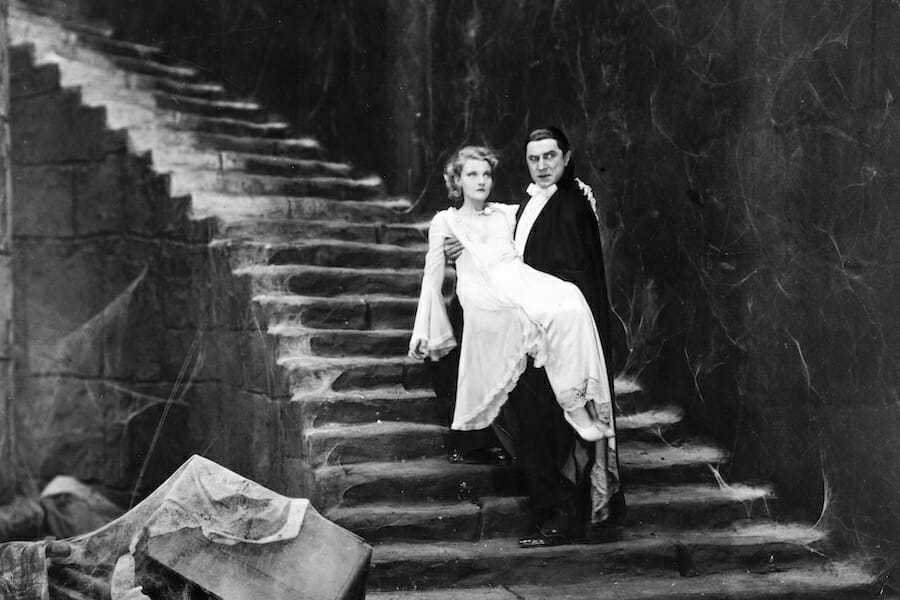
An Appreciation of the 1931 Classic ‘Dracula’
We have all seen the classic 1931 movie, Dracula, (some of us repeatedly) and can repeat key lines delivered by the suave and sinister Count Dracula played by actor, Bela Lugosi. In short, no matter how the classic label is attached, the film has come to be treated often as camp. But did you know that there was another Dracula?
It was shot simultaneously in Spanish – English during the day and Spanish at night – on the same sets using the same costumes. A film lost for many decades. However, a print was found in the 1970s and restored. Because it was shot at night with a very long running time, the Spanish language camera crew figured out ways to produce a product with effects superior to the English version. Many deem this version to be superior to the one we think of as the classic – even down to the performance of Dracula himself.
Directed to imitate Bela Lugosi, the Spanish language Dracula, Conde Carlos Villarias, nevertheless brought his own unearthly verve and sinister gaiety to the role.
I won’t forget the way his eyes began to bulge and roam about seeking his prey, nor the way his attenuated fingers and sharp nails appeared to grow and wave and clench as they went for the neck. This is very high camp, indeed. The audience loved it. They laughed but it was uneasy laughter-cascading into none too happy screams – the response you would expect at a performance of Dracula!
The effects of this extravagant film were heightened by the simultaneous performance of guitarist, Gary Lucas, who composed the film’s score and played several guitars as an accompaniment, whose themes by turns were electronically eerie, and like a theremin, were mellow and flamenco-like, beautiful, unearthly and chilling. A Cuban reviewer noted that the performance of Lucas, who had successfully defied the gods by performing on The Day of the Dead, was so effective that Dracula did not need any help rising from the grave – Lucas brought him to life solely with his guitars. Lucas’s performance was so vivid and powerful that he will return within the year for more performances.
I will refrain from giving a reprise of the Spanish storyline, but merely point out some wonderful effects. There is a shot of the Conde’s coachman – only his knees and the space between them – showing trailing spider webs and huge spiders traveling about from knee to knee. Really, quite effectively horrible. A richly florid and detailed review of the Spanish language version also points out the treatment of Dracula emerging from his coffin. “We see the lid lifting a crack and a hand spidering out…the coffin lid springing open, releasing clouds of fog, out of which Dracula appears.” Now that’s show biz! And that’s horror!
Which brings us to the setting. This Spanish language Dracula was shown at the United Palace of the Cultural Arts in Washington Heights, an amazing former temple/palace/theatre operated by the Reverend Ike (June 1, 1935 — July 28, 2009), an American minister and electronic evangelist who was based in New York City. The Palace has just been restored to its former glory after a highly successful fundraising campaign. It is spectacular. The theme is elephants – it is vaguely Egyptian, Assyrian, with a shot of the Biblical and it has its own bizarre beauty. With 3,000+ seats, it could accommodate temple goers on the order of the Times Square Ministry and cultural events on a grand scale.
This is a New York City cultural venue worth watching. Upcoming events: the Palace will run at least two films per month—a Spanish language film (Casablanca is next) and a classic New York-based movie. Prominent people from the neighborhood will introduce the films and afterward there will be Q&A sessions. The Palace is magnificent! Dracula bites! Together they are a celebration of the continued revival of Washington Heights. Alas, this was a onetime showing but the electric response of the audience – whose frequent shouts and applause indicated their enthusiasm, may encourage other showings. Watch for them!

